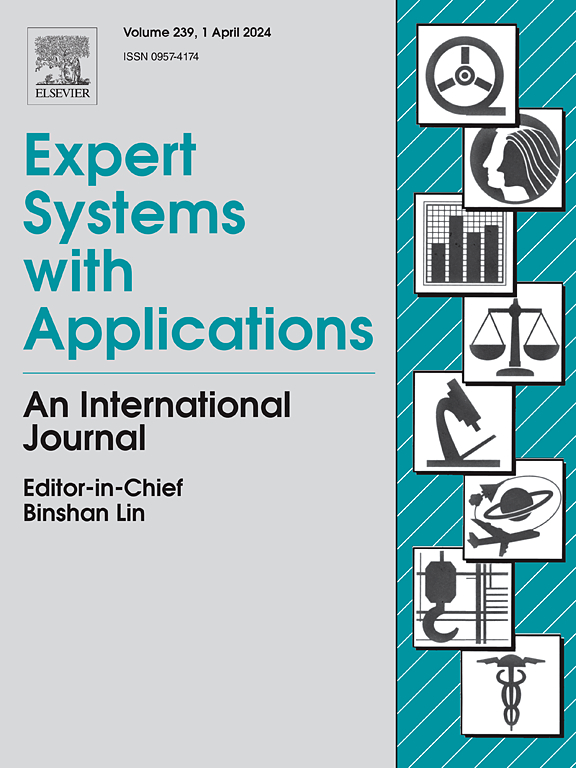Deep multi-negative supervised hashing for large-scale image retrieval
IF 7.5
1区 计算机科学
Q1 COMPUTER SCIENCE, ARTIFICIAL INTELLIGENCE
引用次数: 0
Abstract
Deep hashing has been widely applied in large-scale image retrieval due to its robust retrieval performance and high efficiency in computation/storage. Most deep supervised hashing methods exploit pairwise sampling or triplet sampling for optimization. However, these methods can only leverage the intrinsic structure information of a small subset of images, resulting in a suboptimal retrieval space for deep hashing methods. For addressing this limitation, we propose a novel deep multi-negative supervised hashing (DMNSH) method whose basic idea is to sample a positive and multiple negatives for an anchor, in order to leverage more structure and supervise information during the training process. For improving the training efficiency of the convolutional neural networks (CNN) for large-scale image retrieval, the DMNSH method adopts a mini-batch optimization strategy. A sample reusing strategy is proposed to construct multi-negative tuples efficiently with limited training images in the mini-batch during each round of optimization. To perform multi-negative learning, we further design a multi-negative loss function in which hashing codes are relaxed as CNN output features. By minimizing this multi-negative loss function, the similarity semantics of images are preserved, and the quantization errors of relaxing are minimized. For making the optimization process more stable, an adaptive margin is further incorporated into the loss function to improve the retrieval performance. The stochastic gradient descent and backpropagation strategies are employed to optimize the CNN parameters. Experimental results on three popular deep hashing datasets demonstrate that DMNSH significantly outperforms existing state-of-the-art hashing methods in terms of both precision and efficiency.
用于大规模图像检索的深度多重负监督哈希算法
深度散列因其稳健的检索性能和高效的计算/存储效率,已被广泛应用于大规模图像检索。大多数深度监督散列方法利用成对采样或三重采样进行优化。然而,这些方法只能利用一小部分图像的内在结构信息,导致深度散列方法的检索空间不够理想。针对这一局限,我们提出了一种新颖的深度多负值监督散列(DMNSH)方法,其基本思想是为一个锚点采样一个正像和多个负像,以便在训练过程中利用更多的结构和监督信息。为了提高用于大规模图像检索的卷积神经网络(CNN)的训练效率,DMNSH 方法采用了迷你批量优化策略。该方法提出了一种样本重用策略,在每一轮优化过程中,利用迷你批次中有限的训练图像有效地构建多负图元组。为了进行多负值学习,我们进一步设计了一个多负值损失函数,其中将哈希码作为 CNN 输出特征进行了放松。通过最小化这个多重负损失函数,可以保留图像的相似性语义,并最小化松弛的量化误差。为了使优化过程更加稳定,还在损失函数中加入了自适应余量,以提高检索性能。采用随机梯度下降和反向传播策略来优化 CNN 参数。在三个流行的深度散列数据集上的实验结果表明,DMNSH 在精度和效率方面都明显优于现有的一流散列方法。
本文章由计算机程序翻译,如有差异,请以英文原文为准。
求助全文
约1分钟内获得全文
求助全文
来源期刊

Expert Systems with Applications
工程技术-工程:电子与电气
CiteScore
13.80
自引率
10.60%
发文量
2045
审稿时长
8.7 months
期刊介绍:
Expert Systems With Applications is an international journal dedicated to the exchange of information on expert and intelligent systems used globally in industry, government, and universities. The journal emphasizes original papers covering the design, development, testing, implementation, and management of these systems, offering practical guidelines. It spans various sectors such as finance, engineering, marketing, law, project management, information management, medicine, and more. The journal also welcomes papers on multi-agent systems, knowledge management, neural networks, knowledge discovery, data mining, and other related areas, excluding applications to military/defense systems.
 求助内容:
求助内容: 应助结果提醒方式:
应助结果提醒方式:


